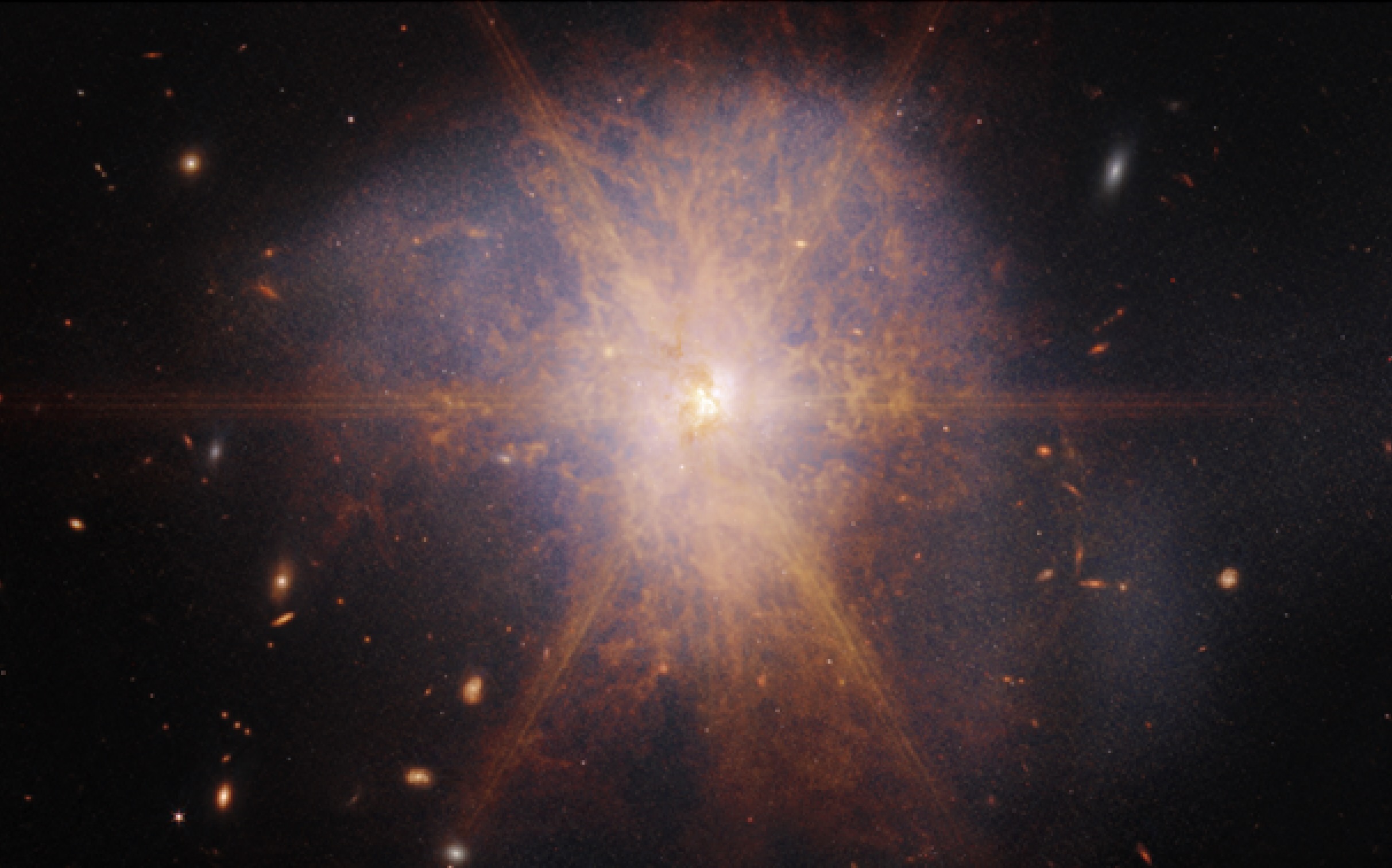Merging galaxies shine with the light of a trillion suns in gorgeous James Webb Space Telescope photo
JWST keeps giving us cosmic eye candy.
We won't be around to watch our Milky Way galaxy fuse with its closest neighbor, Andromeda, a few billion years from now. But we're getting a spectacular front-row seat to another galactic merger, thanks to NASA's powerful James Webb Space Telescope (JWST or Webb).
A newly released JWST photo captures two galaxies collectively called Arp 220, which are now merging 250 million light-years from Earth in the constellation Serpens (the Serpent).
Galaxy mergers unfold for a long time, even on cosmic timescales. Astronomers think the galaxies of Arp 220, which are spirals like the Milky Way and have similar tails swirling in their outskirts, began blending 700 million years ago. (For reference, the Milky Way galaxy will closely approach Andromeda in the next four to five billion years, and the merger itself will span 10 billion years.)
Related: James Webb Space Telescope: Everything you need to know
When Arp 220's galaxies began merging, the abundant gas and dust triggered intense star formation, and most of it was concentrated in their dusty central regions. "The amount of gas in this tiny region is equal to all of the gas in the entire Milky Way galaxy," Webb team members wrote in an image description published on Monday (April 17).
Over 200 star clusters are packed in an area just 5,000 light-years across, astronomers say. Arp 220's central star-forming ring shines brilliantly, its light seen as six spikes ejecting out in Webb's image.
Webb isn't the first to eye Arp 220. Pictures clicked by NASA's Hubble Space Telescope in 2002 were key to spotting the cores of Arp 220's galaxies. The space agency's Chandra X-Ray Observatory also has observed Arp 220, and has recorded X-rays blasting out from these centers, which are separated by 1,200 light-years. Chandra specializes in seeing massive and violent objects in the universe like black holes and supernovas, so astronomers think the X-rays hint at supermassive black holes residing at the centers of both galaxies.
Breaking space news, the latest updates on rocket launches, skywatching events and more!
Astronomers previously thought that, like its central region, much of Arp 220 hosts heaps of star clusters, but recent research that analyzed Hubble's pictures found that star formation "shut off suddenly everywhere" about 100 million years ago, possibly as a consequence of the merger. It looks like Arp 220 is now in a post-starburst stage, which means it does not produce stars at extreme, short-lived rates, but is instead quiescent.
To click this latest image, Webb used two high-tech instruments onboard: The Near Infrared Camera (NIRCam) — the telescope's primary camera — and Mid-Infrared Instrument (MIRI), which can snap images as well as capture the light spectra of its targets. Both instruments were handy, as Arp 220 shines its brightest in infrared wavelengths. Indeed, the object's light is equivalent to "more than a trillion suns," according to the image description. Our Milky Way's luminosity, by comparison, is about 10 billion suns, Webb team members said.
Astronomers do not usually tag two merging galaxies with one name. Arp 220 is the 220th celestial object in the Atlas of Peculiar Galaxies. Published in 1966 by American astronomer Halton C. Arp, the catalog lists 338 uncommon galaxies whose shapes astronomers did not understand back then.
A subset of the collection to which Arp 220 belongs includes galaxies that were neither spiral nor elliptical, and left an open question for future astronomers to dive into. Arp 220's jumbled shape was explained when they later found that it is not one but two galaxies coalescing.
Follow Sharmila Kuthunur on Twitter @Sharmilakg. Follow us on Twitter @Spacedotcom and on Facebook.

Sharmila Kuthunur is an independent space journalist based in Bengaluru, India. Her work has also appeared in Scientific American, Science, Astronomy and Live Science, among other publications. She holds a master's degree in journalism from Northeastern University in Boston.

